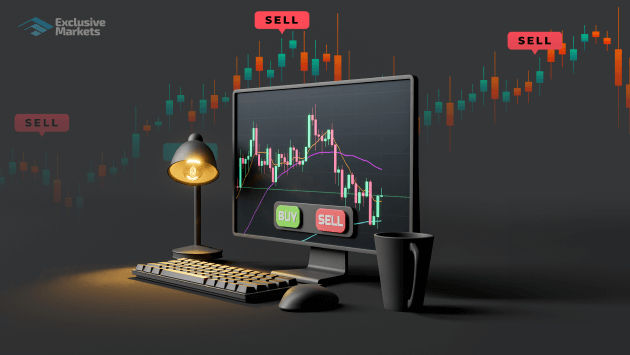
Understanding Forex Trading: Strategies, Tools, and Tips
Forex trading, or foreign exchange trading, has grown in popularity over the past few decades. This booming market has attracted millions of traders, from small retail investors to large financial institutions. If you’re looking to delve into forex trading, you will find a wealth of opportunities as well as challenges. To kickstart your journey, it’s essential to have a solid understanding of the fundamental concepts and strategies involved in trading. Moreover, if you are interested in enhancing your trading experience, consider checking out available forex and trading Forex Brokers in Cambodia. This could provide you with additional resources and tools to improve your trading skills.
The Basics of Forex Trading
Forex trading involves the buying and selling of currency pairs. Unlike the stock market, where you purchase shares of individual companies, in forex, you trade currencies against each other. For example, if you believe that the Euro will appreciate against the US Dollar, you would buy the EUR/USD currency pair. Conversely, if you anticipate that the Euro will decline, you would sell the pair. Understanding how currencies are valued and the factors influencing currency movements is crucial for successful trading.
Understanding Currency Pairs
Currencies are traded in pairs, with the first currency being the base currency and the second one the quote currency. The exchange rate indicates how much of the quote currency you need to spend to purchase one unit of the base currency. Currency pairs are categorized into three main types:
- Major Pairs: These include the most traded currencies, such as EUR/USD, GBP/USD, and USD/JPY.
- Minor Pairs: These are less commonly traded pairs that do not include the US dollar, like EUR/GBP or AUD/NZD.
- Exotic Pairs: These involve one major currency and one from an emerging economy, like USD/SEK or EUR/TRY.

Trading Strategies in Forex
To navigate the complexities of the forex market, traders often employ specific strategies tailored to their trading style and risk tolerance. Here are some popular trading strategies:
- Scalping: This strategy involves making numerous trades throughout the day to profit from small price changes. Scalpers aim for quick wins, often holding positions for just a few seconds to minutes.
- Day Trading: Day traders open and close positions within a single trading day, avoiding overnight risk. They rely on charts and technical indicators to identify entry and exit points.
- Swing Trading: This longer-term strategy focuses on capturing price swings in the market over several days or weeks. Swing traders typically rely on technical analysis and fundamental news to make informed decisions.
- Position Trading: Position traders take a long-term view, holding onto trades for weeks, months, or even years based on fundamental analysis and overall market trends.
Tools and Resources for Forex Trading
To enhance your forex trading experience, leveraging the right tools and resources is crucial. Here are some essential ones to consider:
- Trading Platforms: A good trading platform facilitates smooth trading. Popular platforms like MetaTrader 4 and MetaTrader 5 offer advanced charting tools and indicators.
- Technical Analysis Tools: Tools such as moving averages, Fibonacci retracements, and Bollinger Bands help traders analyze price movement and identify potential entry and exit points.
- Economic Calendars: Staying informed about upcoming economic events can help traders anticipate market movements. Economic calendars provide dates and details of significant reports that could impact currency prices.
- Brokerage Resources: Many forex brokers offer educational resources, including webinars, articles, and demo accounts for practice trading.
Managing Risks in Forex Trading

Risk management is a critical aspect of forex trading. To protect your trading capital, consider implementing the following strategies:
- Set Stop-Loss Orders: A stop-loss order automatically closes your position once a currency pair reaches a predetermined price, limiting potential losses.
- Use Proper Position Sizing: Determine how much of your trading capital you are willing to risk on each trade and adjust your position size accordingly.
- Diversify Your Portfolio: Avoid putting all your capital into one currency pair. Diversifying across different pairs can mitigate risk.
- Stay Informed: Continuously educate yourself about market trends, economic indicators, and global events that could impact currency movements.
The Psychology of Trading
Forex trading is as much about the mind as it is about strategies and analysis. Emotional discipline is crucial for trading success. Here are some psychological tips for traders:
- Stay Calm: Avoid making impulsive decisions based on fear or greed. Stick to your trading plan and strategies.
- Avoid Overtrading: Trading too frequently can lead to unnecessary losses. Focus on quality trades rather than quantity.
- Learn from Losses: Every trader experiences losses. Instead of dwelling on them, analyze what went wrong and adjust your strategies accordingly.
Conclusion
The world of forex trading offers numerous opportunities for those willing to invest time and effort into learning the trade. By understanding the basics of currency pairs, employing effective trading strategies, utilizing the right tools, managing risks, and mastering the psychological aspects of trading, you can enhance your chances of success in the forex market. With the right approach and a commitment to continuous learning, forex trading can become not just a source of income, but also a fascinating journey that expands your financial knowledge.